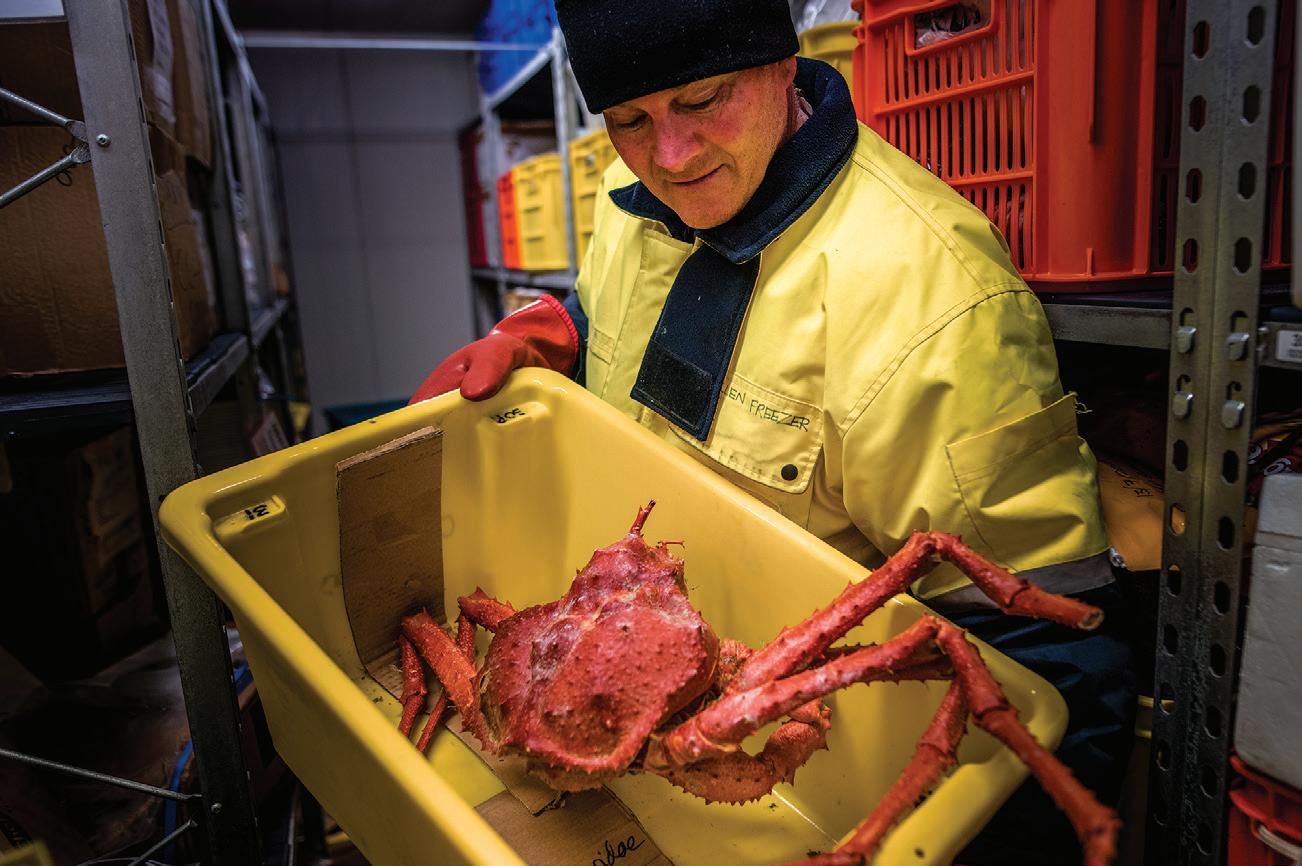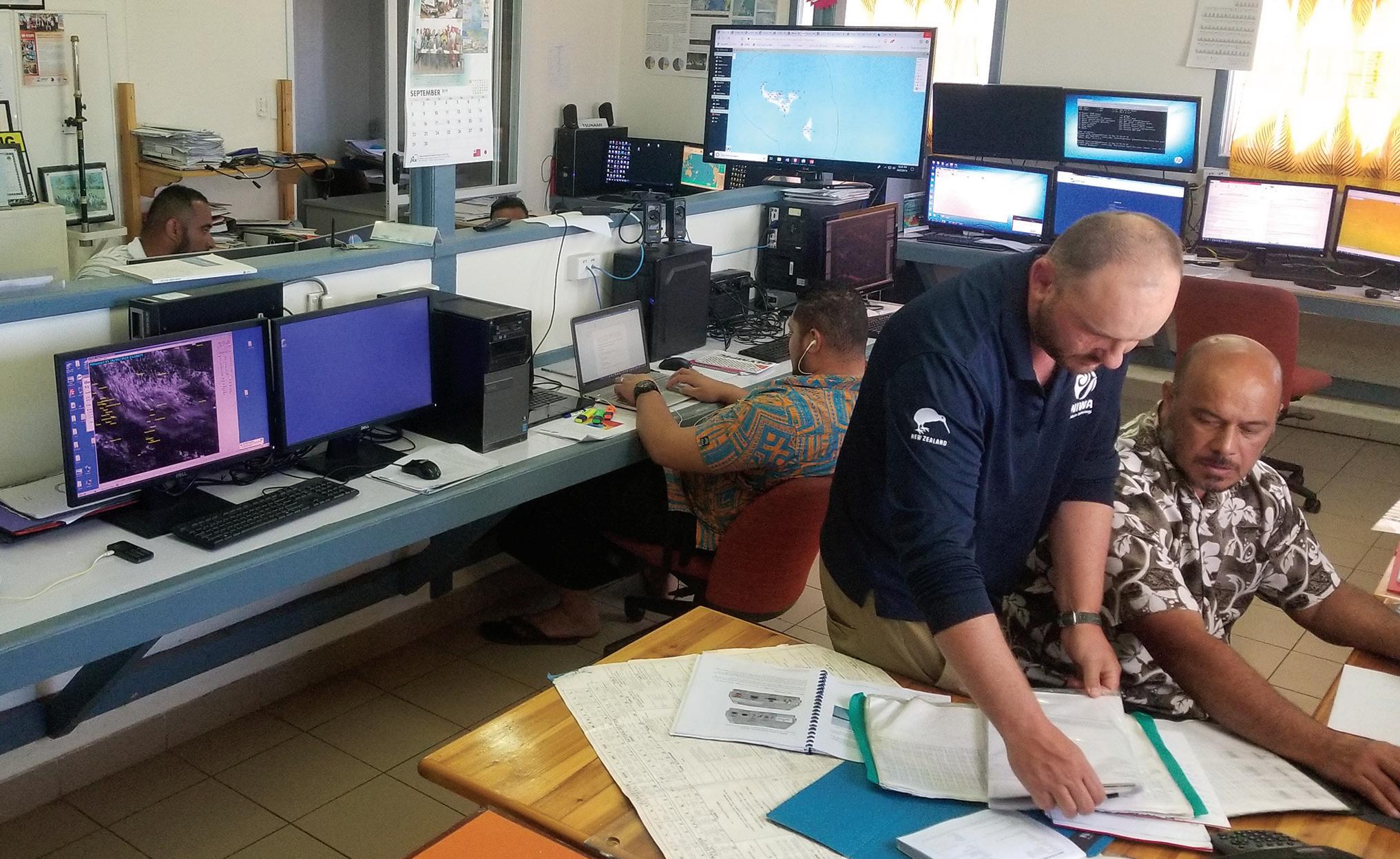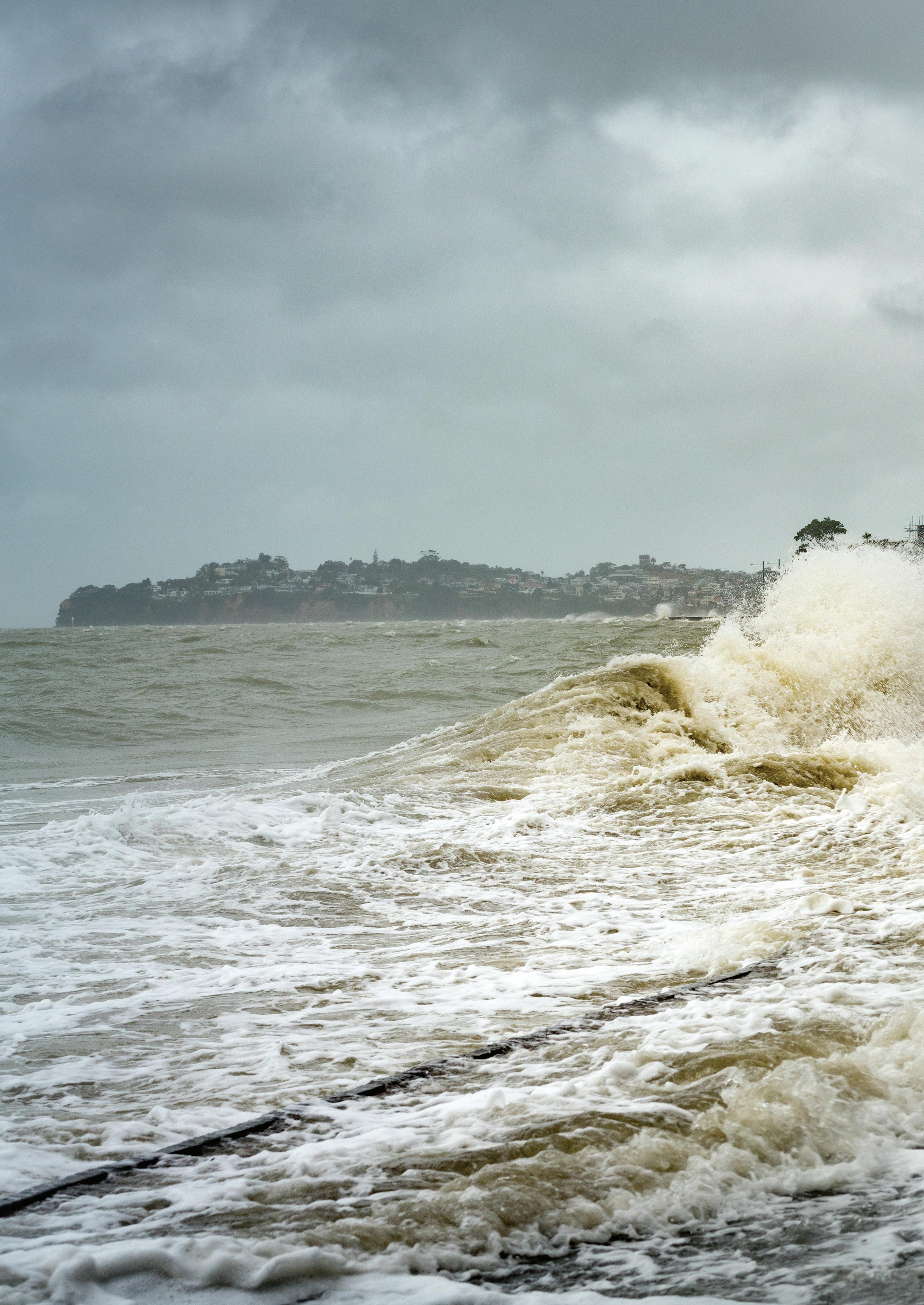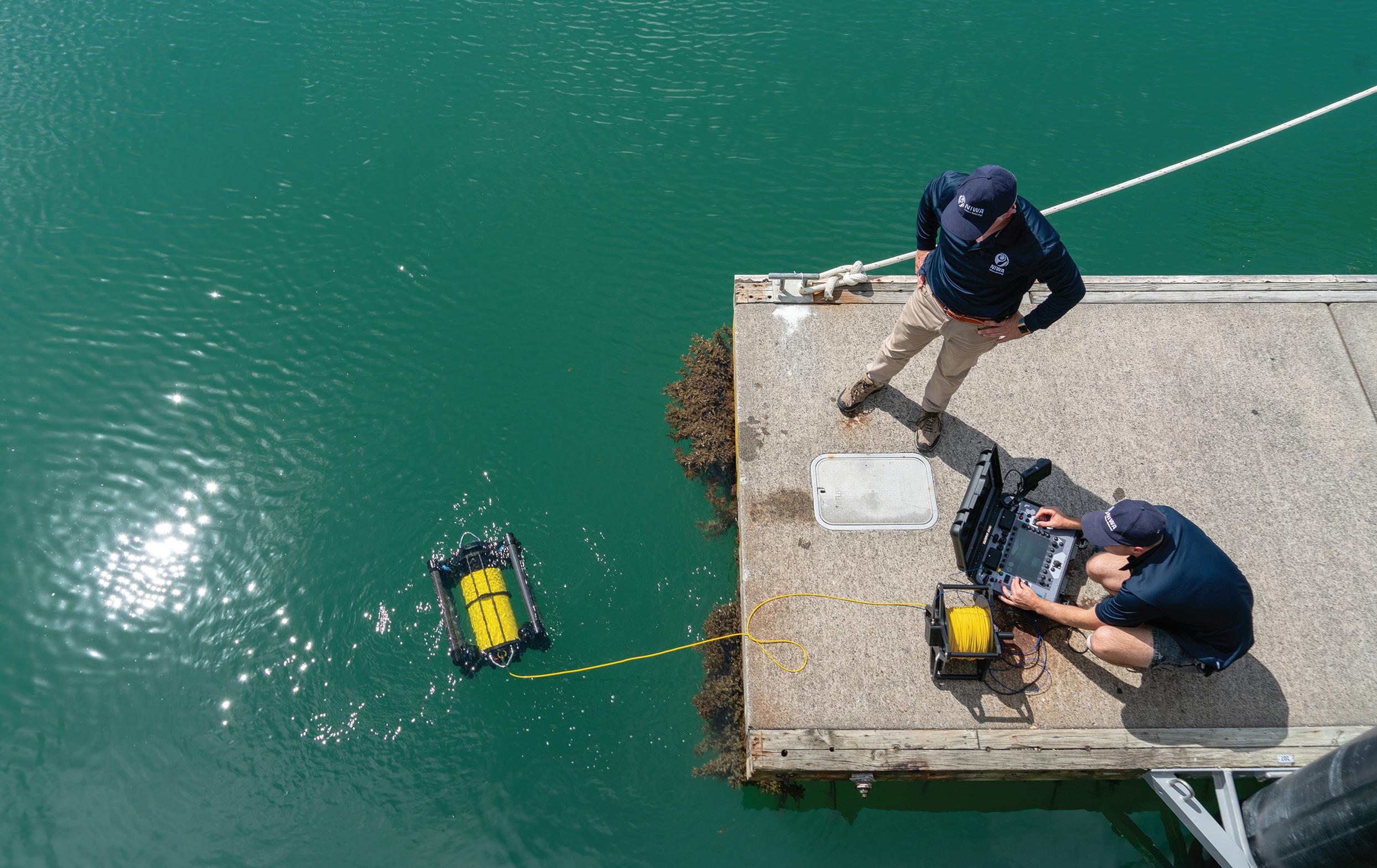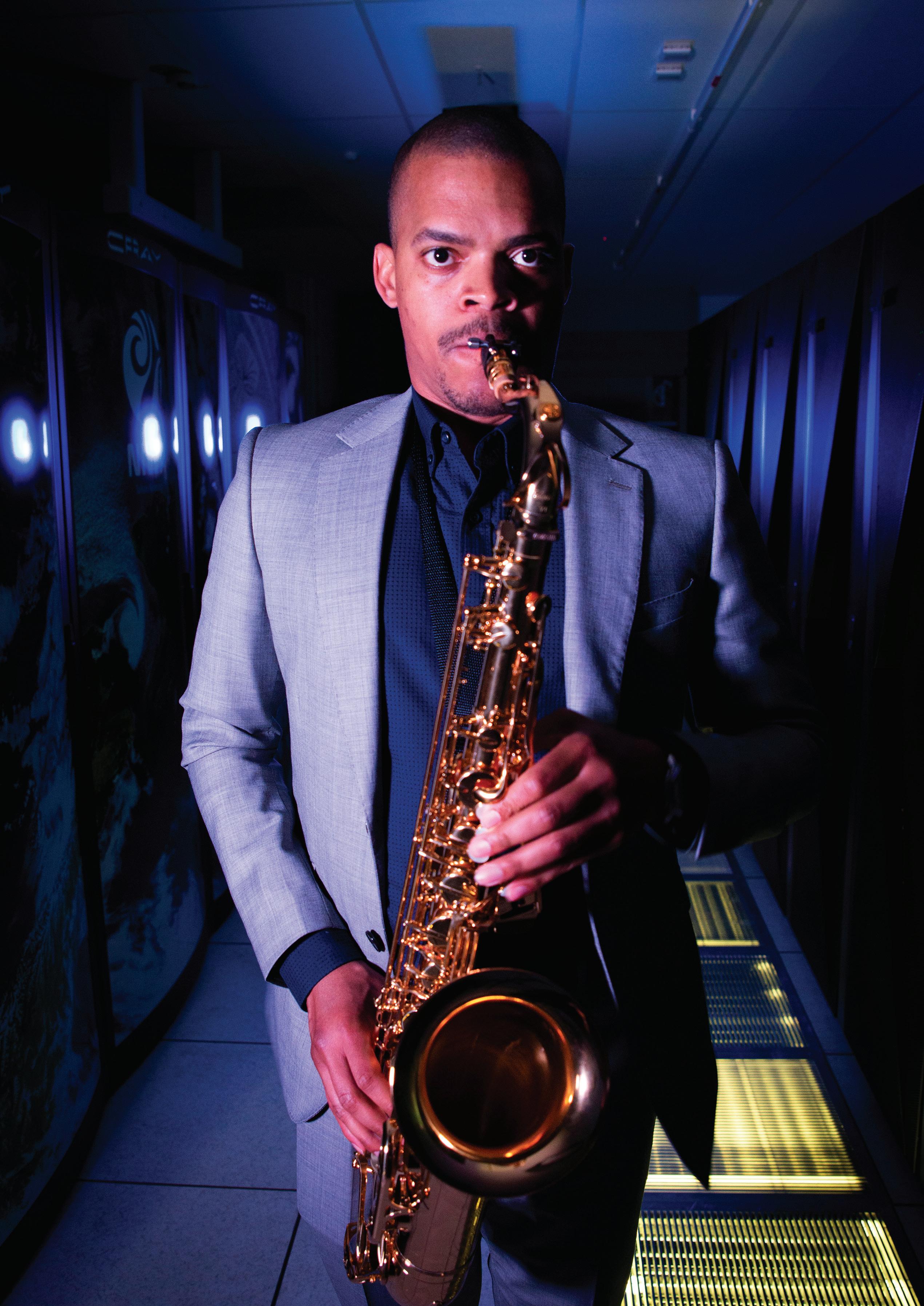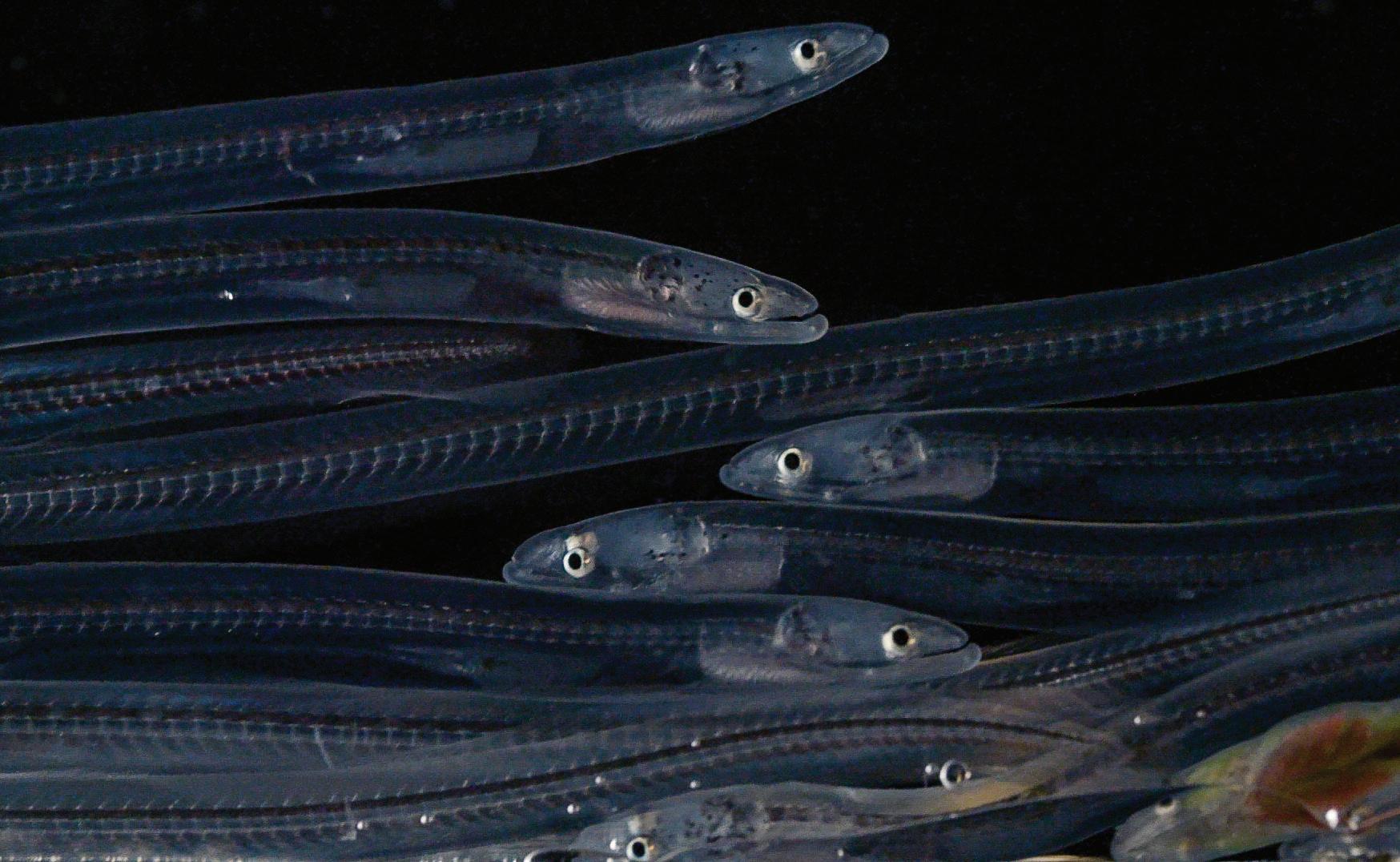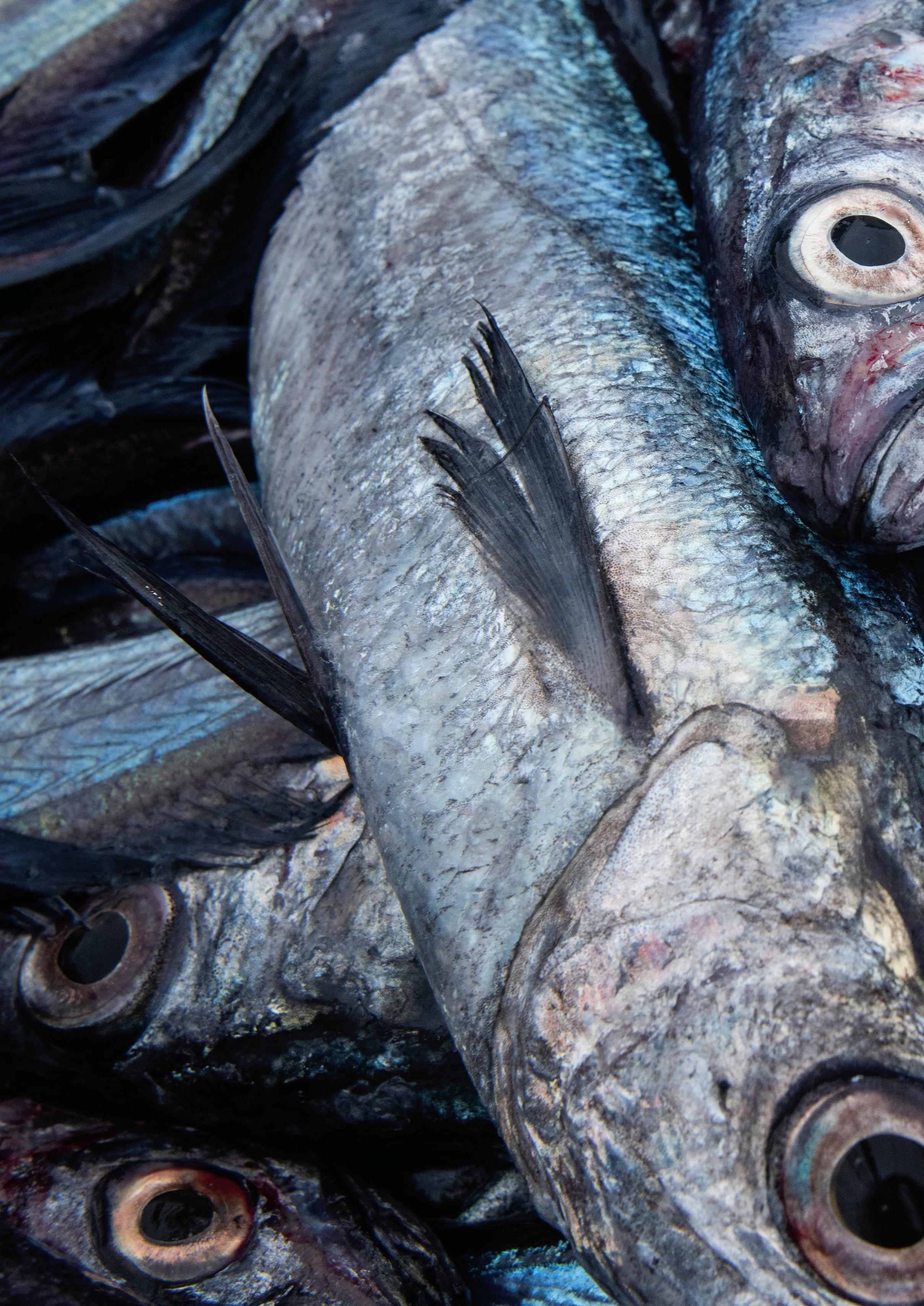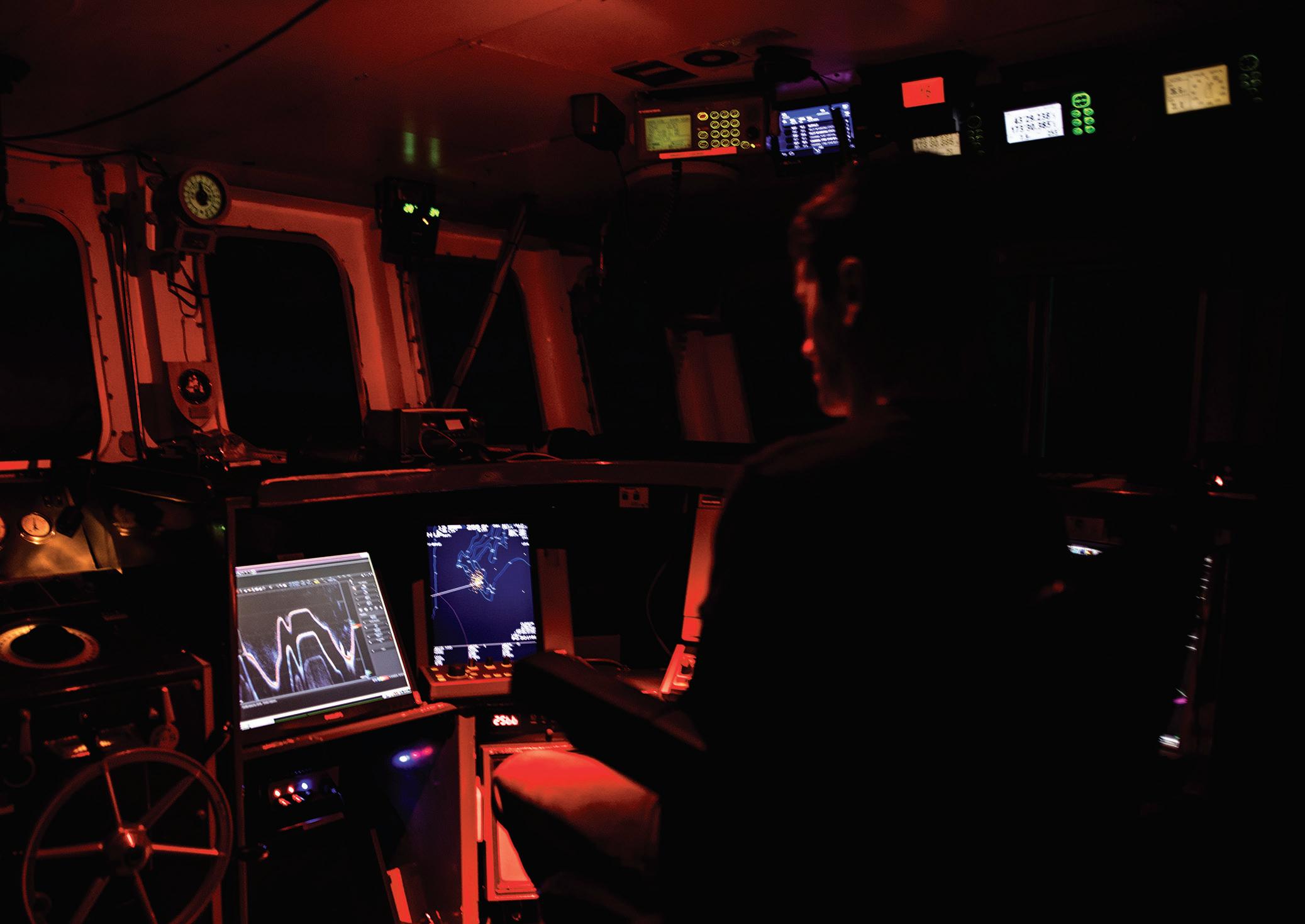Science on the high seas By Sam Fraser-Baxter
Night watch on the bridge of research vessel Kaharoa, monitoring acoustic signals from hoki schools up to 1000m below. (Rebekah Parsons-King)
sustainability of the hoki fishery in New Zealand
”
Dr Richard O’Driscoll
A fast-growing, deepwater, schooling species, hoki is New Zealand’s largest fishery. The majority of the catch is exported, and it earns New Zealand about $200 million a year. But how do fisheries managers protect that resource and decide how much fish can be safely taken each year? This is where NIWA’s team of fisheries scientists, led by Dr Rosemary Hurst (see previous story) come in. Hoki, for example, is one of New Zealand’s most carefully studied species, and exemplifies the critical role science plays in maintaining both a lucrative and sustainable industry. NIWA scientists, often working on research vessels Tangaroa and Kaharoa, have been surveying the fishery since 1995, building on work started by the Ministry of Agriculture and Fisheries about 10 years earlier. Standardised trawl and acoustic surveys are supplemented by data from commercial catches to model populations under various catch scenarios. Fisheries New Zealand (FNZ) uses this information to determine the allowable catch. The ability to react to observed changes in fish
www.niwa.co.nz
populations, and raise or lower the catch accordingly, is the key to a sustainable fishery. Every winter, thousands of tonnes of hoki swim from the deep waters around the Chatham Rise and the Sub-Antarctic Plateau, to Cook Strait and the west coast South Island respectively to spawn. The deepwater canyons in these areas are the main hoki fishing grounds. Because the fish are highly aggregated in spawning schools, the areas are also key sites for NIWA’s long-running scientific acoustic surveys monitoring hoki populations. In the latest Cook Strait survey, NIWA’s research vessel Kaharoa headed out along a series of randomised transects with an acoustic transducer attached to the hull. NIWA Fisheries’ Principal Scientist Richard O’Driscoll describes the transducer as a “fancy version of a fish finder”. Pulses of sound are emitted towards the seafloor. When these acoustic pulses reach something in the water column, they’re reflected back to the researchers’ computer screens on board Kaharoa. Different fish send back different patterns, and the amplitude of the returning soundwave is proportional to the density of fish. The results are analysed and can be used to estimate species abundance. A trawl net is used to catch a small representative
Water & Atmosphere
February 2020
Bex Parsons-King
all want to “We have long-term
Ever wondered what fish is served in a Filet-oFish at MacDonald’s? It’s hoki. Fish fingers at the supermarket? Chances are, they’ll be hoki too.
27

